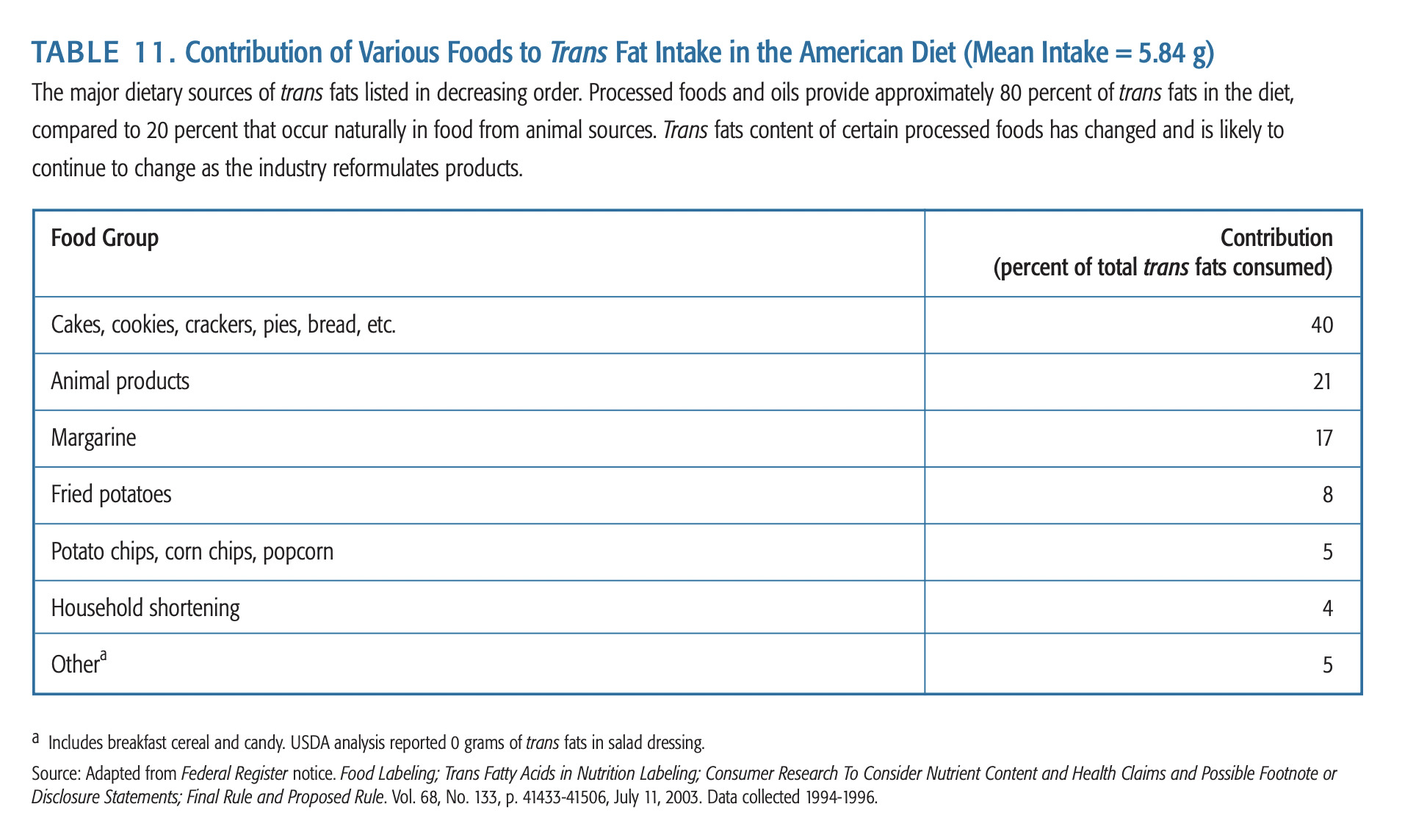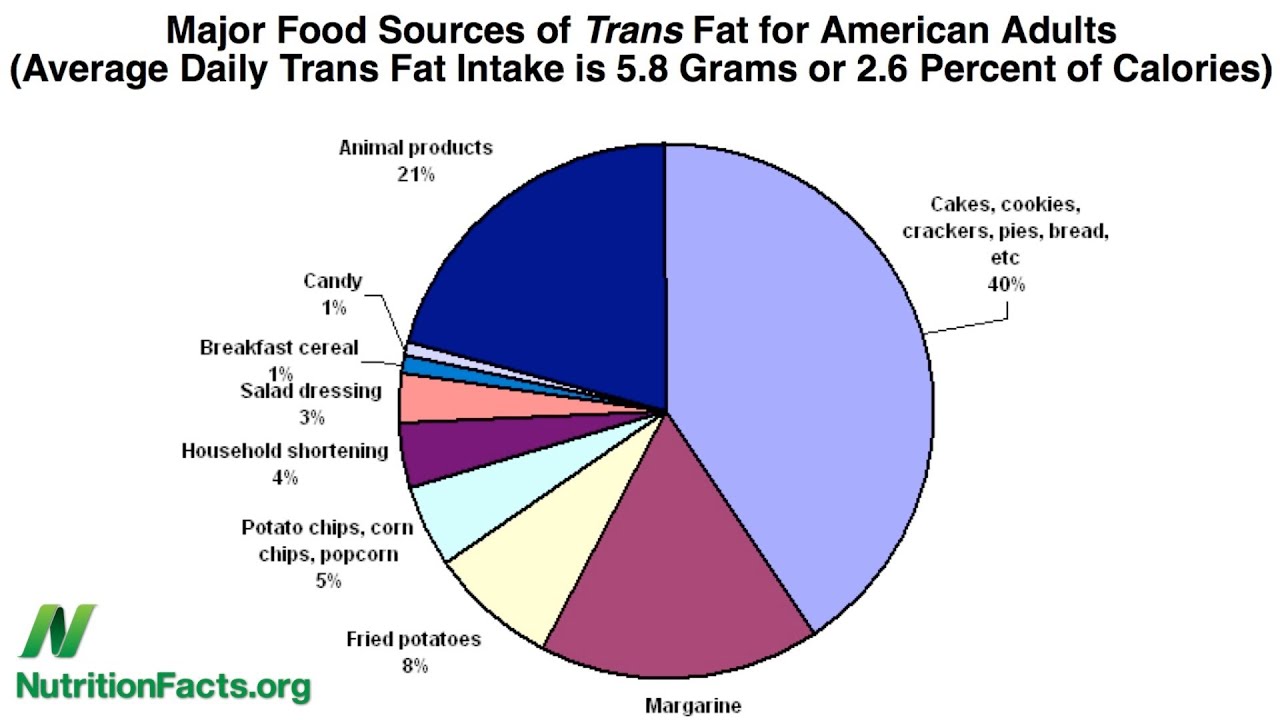- Natural trans fats: Found in animal products only. Plant foods in their natural form have no trans fats.
-
Artificial trans fats: Derived from plant sources through industrial processing:
- Major source of trans fats: Partially Hydrogenated Oils (PHOs). They are produced in the industry for improving shelf life and texture of processed foods like hard margarines, vegetable shortenings and commercially baked goods like cakes, cookies, crackers, icings and so on.
- Minor source of trans fats: Certain oils like canola oil and soybean oil have small quantities of trans fats. These are produced during the refining process. [Note that oils are basically plant extracts, not plants in their natural form.]
Put together, trans fats are found in animal products, a few oils, and UPFs (Ultra-Processed Foods) containing PHOs (Partially Hydrogenated Oils). Trans fats are not found in whole plant foods (in their natural form).
WHO article: Nutrition: Trans Fats explains:
USDA estimates: Excerpt from How much trans fat is found in meat and poultry?
… but do such small amounts add up to something substantial when we consume such foods in large quantities? Yes!
USDA estimates: An estimated 20% of trans fat intake in USA comes from naturally occurring trans fats from animal foods!

FDA estimates: The original source of data in Table 11 above is an FDA publication: Food Labeling: Trans Fats. In this publication, Table 1 (Average Trans Fat Intake of U.S. Adults From Food Groups) explains that 1.2g of trans fats come from 5 sources: (a) milk, (b) ice cream and ice milk, (c) cheese and cottage cheese, (d) frankfurter and lunch meat, (e) fluid & sour cream, (f) butter. An additional 4.6g of trans fats comes from a variety of "hydrogenated products" like bread, cakes, cookies, chips, candy, margarine, shortening, …
The table above may be visualized as a pie chart:

A systematic review attempted to estimate based on published literature: Trans Fat Intake and Its Dietary Sources in General Populations Worldwide: A Systematic Review by Wanders et al, Nutrients. 2017 Aug; 9(8): 840. Excerpts:
They clarify:

 Instagram
Instagram YouTube
YouTube